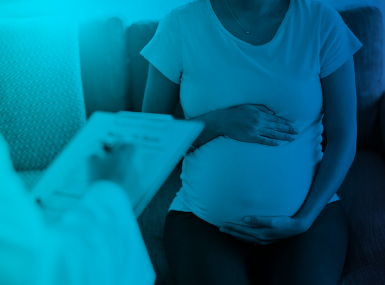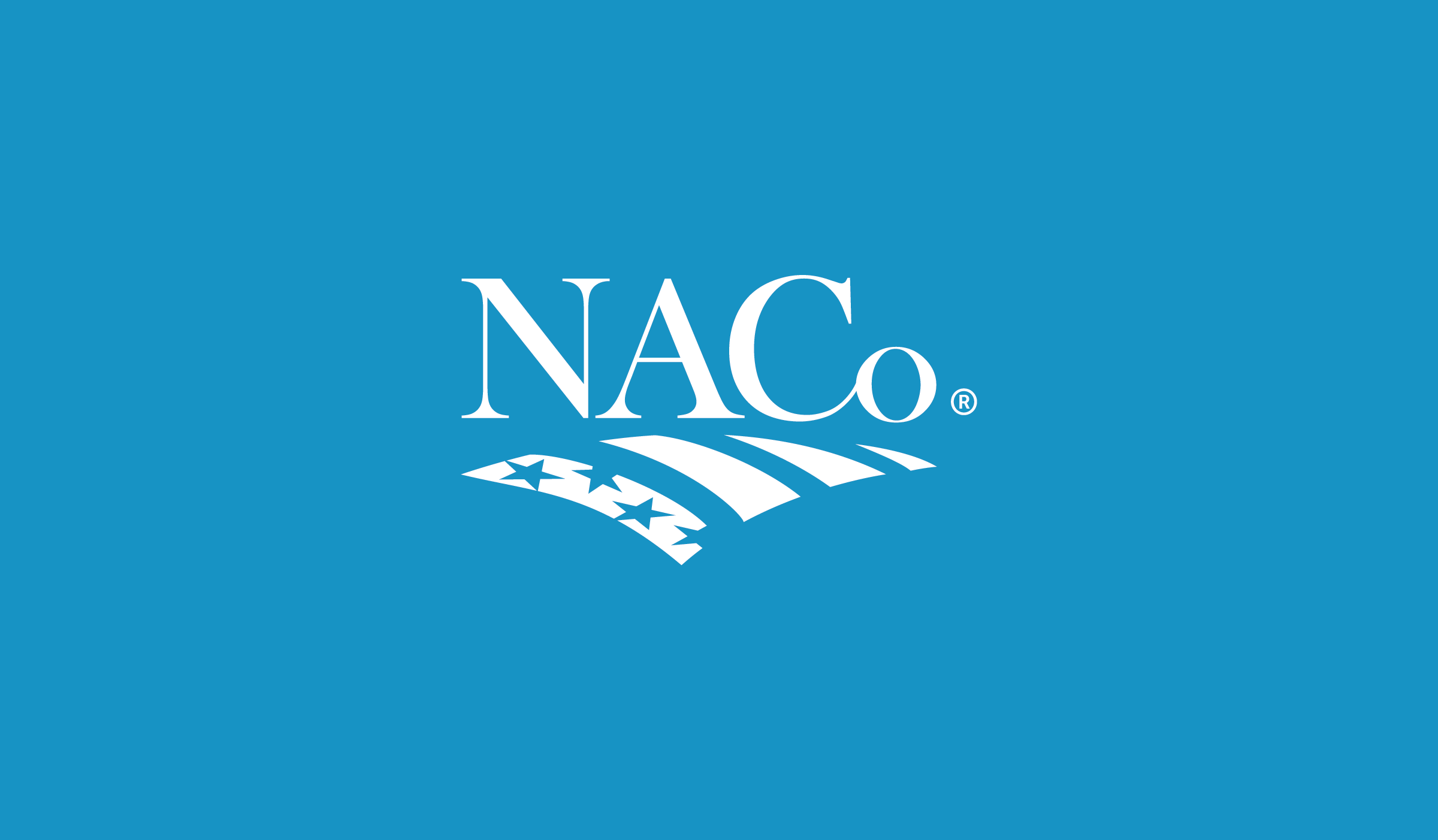Treatment for Neonatal Abstinence Syndrome: A NACo Opioid Solutions Strategy Brief

Upcoming Events
Related News
“Collaborative planning and implementation of services that reflect best practices for treating opioid use disorders during pregnancy are yielding promising results in communities across the country.”
– U.S. Substance Abuse and Mental Health Services Administration1
What is Neonatal Abstinence Syndrome?
Approximately 1 in 20 people who become pregnant use drugs during pregnancy.2 This translates to roughly 200,000 substance-exposed infants each year.
Neonatal Abstinence Syndrome or NAS (also called Neonatal Opioid Withdrawal Syndrome or NOWS) is a condition that sometimes affects newborns of parents who have taken opioids during pregnancy. In the absence of other health complications, NAS is a short-term condition that can be simple and inexpensive to treat3,4 and poses no risks of long-term cognitive or physical deficit to the child.5,6
NAS is an expected outcome for the infants of parents who received medications for opioid use disorder (MOUD), the gold standard treatment for opioid use disorder (OUD), during pregnancy. However, because NAS does not cause long-term health consequences, treatment with MOUD – as opposed to withdrawal and abstinence – is safer for both parents and their infants.
What are effective treatments for NAS?
Opioid-affected parents and their newborns are best served by treating parents and newborns as a unit.7 This family-centered approach to care includes:
- MOUD treatment for the parent during pregnancy and after delivery;8,9
- Rooming in, or placing parents and infants in the same hospital room;10
- System-wide adoption of the eat-sleep-console model of NAS care; and
- Wraparound psychological and social support services for the parent or parents;8
- Family-centered care does not include punitive responses to substance use for pregnant or parenting people, such as civil or criminal sanctions, as these invite greater health risks for both parents and infants.4,8
What evidence supports treating parents and newborns with NAS as a unit?
Treating OUD with methadone and buprenorphine during pregnancy is encouraged by the American Society for Addiction Medicine (ASAM),9 the American College of Obstetricians and Gynecologists (ACOG)8 and the American Academy of Pediatrics.11 Treatment with MOUD during pregnancy significantly reduces the risk of preterm birth12 and virtually eliminates the risk of non-fatal overdose during pregnancy.13
Infants with NAS are not at risk of long-term physical or cognitive harm. There is no evidence linking fetal exposure to opioids (including MOUD14) to long term cognitive deficits,5 negative birth outcomes6 or other complex medical conditions15 in the child born of that pregnancy.
The eat-sleep-console model is an evidence-based, in-patient model of postpartum care for families affected by NAS. The eat-sleep-console model is proven to reduce the length of hospital stays and reduce the use of withdrawal management medications for newborns, cutting the cost of hospital stays in half.10,16–19
The Eat-Sleep-Console Model is a standardized approach to NAS.20–22
- Simplified Assessment
- EAT: Can the newborn eat ≥1 ounce per feed?
- SLEEP: Can the newborn sleep ≥1 hour at a time?
- CONSOLE: Can the crying newborn be consoled within 10 minutes?
- If the answer to all of these questions is yes, the newborn is considered well-managed and no further intervention is needed.
- Non-Medication Interventions
- Low-stimulation environment (dimmed lights, reduced noise)
- Rooming-in with the parent(s)
- Parental presence
- Skin-to-skin contact
- Cuddling or holding by a caregiver or volunteer
- Swaddling
- Feeding on demand (breastfeeding when possible)
- Hospital staff continuously engages and supports parents in the care of their newborns
- Other Components
- Prenatal counseling to help parents know what to expect after delivery.
- Train staff to support non-medication interventions and communicate empathetically with parents.
- Morphine as needed and only as a second-line treatment if non-medication interventions fail.
- Empower parents to see themselves as their newborn’s best treatment.
A family-centered approach to care treats infants and their parent(s) as a unit whose health is interconnected. It preserves the parent-infant bond and supports optimal health outcomes.10 Removing or threatening to remove infants from their parent(s) may increase lifetime risk of drug use, criminal justice involvement and other adverse outcomes for the child.23 Child removal also puts birth parents at greater risk of overdose.24
Are there risks to my community or institution if we don’t use approaches that treat parents and newborns with NAS as a unit?
Yes.
Earlier approaches to NAS, like separating parents and infants, placing infants in neonatal intensive care units and using morphine as a first-line treatment for infants, require longer hospital stays and are generally more expensive than the eat-sleep-console approach.25 This can impose significant burdens on the personnel and financial resources of local hospitals.
Further, discrimination against persons receiving MOUD treatment, including pregnant and parenting people, is considered a violation of the Americans with Disabilities Act (ADA) and could be grounds for legal action. The U.S. Department of Justice has entered into legal settlements and arrangements with several healthcare and child welfare systems for failing to accommodate persons receiving MOUD, sometimes resulting in civil monetary penalties paid to the persons affected.26
Are there best practices for addressing the needs of infants with NAS and their parents?
- Support local hospitals with implementing the eat-sleep-console model:
- Provide funding and support for staff education through remote services like Project ECHO.27
- Encourage use of an Eat-Sleep-Console Care Tool as part of the system-wide implementation strategy.
- Consider configuring hospital facilities to support rooming-in as a standard of care for all birth families.
- Build relationships with healthcare providers, child welfare professionals and other relevant stakeholders to support collaborative care models during the perinatal period and as the children grow.28,29
- Develop a template for Plans of Safe Care in accordance with the Child Abuse and Prevention Treatment Act of 2016 (CAPTA), as state laws allow, to reduce child-welfare involvement and improve health outcomes for the whole family.30
- Expand free and affordable family housing options for pregnant and parenting people receiving treatment for OUD,31 including (but not limited to) residential treatment options that allow parents and their children to reside together.
- Fight stigma and misinformation by voicing strong, unambiguous support for MOUD during and after pregnancy, and by raising awareness that NAS is a short-term and relatively easy-to-manage condition.4,32
Click here to see how healthcare providers in Spokane, Wash. are using Eat-Sleep-Console to treat NAS with fewer or no medications and shorter hospital stays.
What are some examples of programs successfully meeting the needs of infants with NAS and their parents?
The Yale New Haven Children’s Hospital was the first to implement the eat-sleep-console model. As a result, the percent of infants with NAS receiving morphine dropped from 98% to 14%, and the infants’ average length of stay dropped from three weeks to 6 days.20
Enhancing Permanency in Children and Families (EPIC) is a multi-agency, coordinated system of care in Ohio that provides substance-involved families with peer recovery supports, incentivized participation in family treatment court, access to MOUD and home-based parenting support.33
The Department of Social Services in Buncombe County, N.C. operates the Sobriety Treatment and Recovery Team (START) Program. START pairs Child Protective Services (CPS) professionals trained in family engagement with peer support specialists who have lived experience undergoing a CPS case. These teams are embedded at local hospitals to support in-home placement, improve parental engagement, accelerate linkage with evidence-based substance use treatments for parents and keep families together.34
These and many other model programs are described online at the Brandeis Opioid Resource Connector.
Author
Jennifer J. Carroll, PhD, MPH
Dr. Carroll is a medical anthropologist, research scientist and subject matter expert on substance use and public health. She is currently an Assistant Professor of Anthropology at North Carolina State University.
Additional Resources
Implementation guidelines and best practices
- The America College of Obstetricians and Gynecologists, “Opioid Use and Opioid Use Disorder in Pregnancy”
- American Academy of Pediatrics, “Neonatal Opioid Withdrawal Syndrome” (clinical statement)
- U.S. Substance Abuse and Mental Health Services Administration, “Clinical Guidance for Treating Pregnant and Parenting Women with Opioid Use Disorder and Their Infants”
- U.S. Substance Abuse and Mental Health Services Administration, “A Collaborative Approach to the Treatment of Pregnant Women with Opioid Use Disorders”
Training and implementation guides for the eat-sleep-console model
- Colorado Hospital Opioid and Substance Exposed Newborn (CHOSEN), “Eat Sleep Console Provider Training” (video)
- Women’s and Infants’ Clinical Institute, “Eat, Sleep, Console”
- The Eat, Sleep, Console (ESC) Care Tool, 3rd Edition
Educational materials for clinicians and laypersons
- National Perinatal Association's infographics on substance use during pregnancy
- National Advocates for Pregnant Women, “Understanding Opioid Use During Pregnancy”
National Network of Perinatal Quality Collaboratives (PQCs)
PQCs consist of state-wide or multi-state networks providing resources and expertise to improve perinatal and infant health outcomes, including improving NAS management. A directory of all nationwide PQCs is available at the link above.
The ORN is a technical assistance collaboration between the American Academy of Addiction Psychiatry and Columbia University. The ORN has local consultants in all 50 states and 9 U.S. territories to provide communities with technical assistance and education on the prevention and treatment of OUD.
Rural Communities Opioid Response Program – Technical Assistance (RCORP-TA)
RCORP-TA is a multi-year initiative by the Health Resources and Services Administration (HRSA) that offers numerous online technical assistance resources, including many on the topic of improving treatment and treatment access for pregnant and parenting people.
- Carroll JJ, Asher A, Krishnasamy V, Dowell D. Linking People with Opioid Use Disorder to Medication Treatment. Published online 2022. Accessed June 8, 2022. Available here.
- Jones CM, Campopiano M, Baldwin G, McCance-Katz E. National and State Treatment Need and Capacity for Opioid Agonist Medication-Assisted Treatment. Am J Public Health. 2015;105(8):e55-63. Available here.
- Mauro PM, Gutkind S, Annunziato EM, Samples H. Use of Medication for Opioid Use Disorder Among US Adolescents and Adults With Need for Opioid Treatment, 2019. JAMA Network Open. 2022;5(3):e223821. Available here.
- Marino LA, Campbell AN, Nunes EV, Sederer LI, Dixon LB. Factors Influencing Buprenorphine Prescribing among Physicians in New York State. J Addict. 2019;2019:7832752. Available here.
- Peterson LE, Morgan ZJ, Borders TF. Practice Predictors of Buprenorphine Prescribing by Family Physicians. Journal of the American Board of Family Medicine: JABFM. 2020;33(1):118-123. Available here.
- Kaplan-Dobbs M, Kattan JA, Tuazon E, Jimenez C, Saleh S, Kunins HV. Increasing Access to Buprenorphine in Safety-Net Primary Care Clinics: The New York City Buprenorphine Nurse Care Manager Initiative. American Journal of Public Health. 2021;111(2):215-218. Available here.
- LaBelle CT, Han SC, Bergeron A, Samet JH. Office-Based Opioid Treatment with Buprenorphine (OBOT-B): Statewide Implementation of the Massachusetts Collaborative Care Model in Community Health Centers. Journal of Substance Abuse Treatment. 2016;60:6-13. Available here.
- Eisenstat S, Siegel AL, Carlson K, Ulman K. Putting Group Visits into Practice: APractical Overview to Preparation, Implementation, and Maintenance of Group Visits at Massachusetts General Hospital. Published online January 2012. Accessed May 29, 2019. Available here.
- Brooklyn JR, Sigmon SC. Vermont Hub-and-Spoke Model of Care for Opioid Use Disorder: Development, Implementation, and Impact. J Addict Med. 2017;11(4):286-292. Available here.
- U.S. Substance Abuse and Mental Health Services Administration. The Case for Screening and Treatment of Co-Occurring Disorders. SAMHSA. Published 2022. Accessed February 26, 2023. Available here.
- El-Sabawi T, Baney M, Canzater SL, Weizman S. The New Mobile Methadone Rules And What They Mean For Treatment Access | Health Affairs Forefront. Health Affairs. Published August 4, 2021. Accessed June 8, 2022. Available here.
- Clark SA, Davis C, Wightman RS, et al. Using telehealth to improve buprenorphine access during and after COVID-19: A rapid response initiative in Rhode Island. J Subst Abuse Treat. 2021;124:108283. Available here.
- Lagisetty P, Klasa K, Bush C, Heisler M, Chopra V, Bohnert A. Primary care models for treating opioid use disorders: What actually works? A systematic review. PLoS ONE. 2017;12(10):e0186315. Available here.
- Beharie N, Kaplan-Dobbs M, Urmanche A, Paone D, Harocopos A. “I didn’t feel like a number”: The impact of nurse care managers on the provision of buprenorphine treatment in primary care settings. Journal of Substance Abuse Treatment. 2022;132. Available here.
- Liebschutz JM, Xuan Z, Shanahan CW, et al. Improving Adherence to Long-term Opioid Therapy Guidelines to Reduce Opioid Misuse in Primary Care. JAMA Intern Med. 2017;177(9):1265-1272. Available here.
- Samet JH, Tsui JI, Cheng DM, et al. Improving the Delivery of Chronic Opioid Therapy among People Living with HIV: A Cluster Randomized Clinical Trial. Clin Infect Dis. Published online July 22, 2020. Available here.
- Carroll JJ, Colasanti J, Lira MC, Del Rio C, Samet JH. HIV Physicians and Chronic Opioid Therapy: It’s Time to Raise the Bar. AIDS Behav. Published online December 5, 2018. Available here.
- Noffsinger EB. Running Group Visits in Your Practice. Springer; 2009. Accessed September 9, 2022. Available here.
- Vakkalanka JP, Lund BC, Ward MM, et al. Telehealth Utilization Is Associated with Lower Risk of Discontinuation of Buprenorphine: a Retrospective Cohort Study of US Veterans. J Gen Intern Med. 2022;37(7):1610-1618. Available here.
- Stratyner HB. Meeting People Where They Are At. Psychology Today. Published March 2, 2010. Accessed May 23, 2023. Available here.
- Bachhuber MA, Thompson C, Prybylowski A, Benitez J, Mazzella S, Barclay D. Description and outcomes of a buprenorphine maintenance treatment program integrated within Prevention Point Philadelphia, an urban syringe exchange program. Subst Abus. 2018;39(2):167-172. Available here.
- Prevention Point Philadelphia. STEP. Prevention Point. Published 2020. Accessed June 8, 2022. Available here.
- Howard Center. Syringe Exchange and Overdose Prevention. Published 2019. Accessed May 31, 2019. Available here.
- Harrington D. The Kraft Center for Community Health at MGH mobilizes care for opioid use disorder to Boston’s most vulnerable. Boston Health Care for the Homeless Program. Published January 11, 2018. Accessed May 31, 2019. Available here.
- Hood JE, Banta-Green CJ, Duchin JS, et al. Engaging an unstably housed population with low-barrier buprenorphine treatment at a syringe services program: Lessons learned from Seattle, Washington. Substance Abuse. 2019;0(0):1-9. Available here.
- Carter J, Zevin B, Lum PJ. Low barrier buprenorphine treatment for persons experiencing homelessness and injecting heroin in San Francisco. Addiction Science & Clinical Practice. 2019;14(1):20. Available here.
- U.S. Centers for Disease Control and Prevention. Tribal Syringe Services Program Helps Reduce Harm from Injection Drug Use. Public Health Professionals Gateway. Published 2020. Accessed October 29, 2021. Available here.
- Registration Requirements for Narcotic Treatment Programs With Mobile Components. Federal Register. Published June 28, 2021. Accessed September 8, 2022. Available here.
- Rural Health Information Hub. Mobile Clinic Model for Improving Access to Medication for Opioid Use Disorder (MOUD) - RHIhub Toolkit. RHI Hub. Published 2023. Accessed February 26, 2023. Available here.
- Pew Charitable Trusts. Mobile Medication Units Help Fill Gaps in Opioid Use Disorder Treatment. Pew. Published November 22, 2021. Accessed September 8, 2022. Available here.
- Andrilla CHA, Moore TE, Patterson DG, Larson EH. Geographic Distribution of Providers With a DEA Waiver to Prescribe Buprenorphine for the Treatment of Opioid Use Disorder: A 5-Year Update. J Rural Health. 2019;35(1):108-112. Available here.
- Flavin L, Malowney M, Patel NA, et al. Availability of Buprenorphine Treatment in the 10 States With the Highest Drug Overdose Death Rates in the United States. J Psychiatr Pract. 2020;26(1):17-22. Available here.
- U.S. Substance Abuse and Mental Health Services Administration. Key Substance Use and Mental Health Indicators in the United States: Results from the 2020 National Survey on Drug Use and Health.; 2021. Accessed October 22, 2021. Available here.
- Sawyer W, Wagner P. Mass Incarceration: The Whole Pie 2022. Prison Policy Initiative. Published March 14, 2022. Accessed September 9, 2022. Available here.
- Bronson J, Stroop J, Zimmer S, Berzofsky M. Drug Use, Dependence, and Abuse among State Prisoners and Jail Inmates, 2007-2009. Bureau of Justice Statistics, Office of Justice Programs, U.S. Department of Justice; 2017. Accessed December 14, 2018. Available here.
- Mumola CJ, Karberg JC. Drug Use and Dependence, State and Federal Prisoners, 2004. Bureau of Justice Statistics, Office of Justice Programs, U.S. Department of Justice; 2007. Accessed May 27, 2019. Available here.
- U.S. Department of Housing and Urban Development, Office of Community Planning and Development. The 2020 Annual Homeless Assessment Report (AHAR) to Congress. Part 1: Point in Time Estimates of Sheltered Homelessness. Published online January 2021. Accessed September 9, 2022. Available here.
- Sharp A, Jones A, Honermann B, Millett G. Vulnerable counties: One year later. Poster Presentation presented at: Conference on Retroviruses and Opportunistic Infections (CROI); March 2018. Accessed July 27, 2019. Available here.
- Mette E. Q&A: A Deep Dive into New York’s Drug User Health Hubs with New York’s Allan Clear. The National Academy for State Health Policy. Published May 18, 2020. Accessed September 9, 2022. Available here.
- Pew Charitable Trusts. State Policy Changes Could Increase Access to Opioid Treatment via Telehealth. PEW. Published December 14, 2021. Accessed September 9, 2022. Available here.
- Weizman S, El-Sabawi T, Baney M, Manoff I. National Snapshot: Access to Medications for Opioid Use Disorder in U.S. Jails and Prisons. Published online July 28, 2021. Accessed September 9, 2022. Available here.
- Cernasev A, Hohmeier KC, Frederick K, Jasmin H, Gatwood J. A systematic literature review of patient perspectives of barriers and facilitators to access, adherence, stigma, and persistence to treatment for substance use disorder. Explor Res Clin Soc Pharm. 2021;2:100029. Available here.
- Samuels EA, Clark SA, Wunsch C, et al. Innovation During COVID-19: Improving Addiction Treatment Access. J Addict Med. 2020;14(4):e8-e9. Available here.
- Caroline County Health Department. Mobile Addiction Treatment Unit Will Serve Caroline County, Providing Medication Assisted Treatment for Opioid Use Disorders. Published online 2019. Accessed March 2, 2023. Available here.
- Caroline County Health Department. Mobile Care Unit Pics. Caroline County Health Department. Published 2019. Accessed March 2, 2023. Available here.
- Mehri McKellar. PARTNER UP Providing a Resource: Telemedicine at Syringe Services Programs to Reach Underserved Populations. Presented at: June 30, 2021. Accessed September 9, 2022. Available here.
- Leonard N. Mobile Methadone Clinic Brings Treatment to New Jersey Prisoners. NBC10 Philadelphia. Published August 19, 2017. Accessed September 9, 2022. Available here.
Opioid Solutions Center
NACo's Opioid Solutions Center empowers local leaders to invest resources in effective treatment, recovery, prevention and harm reduction practices that save lives and address the underlying causes of substance use disorder.


Treatment and Recovery for Pregnant and Parenting People: A NACo Opioid Solutions Strategy Brief
Effective treatment for pregnant and parenting people means expanding access to MOUD and adopting a family-centered approach that prioritizes keeping families together.

Increasing Access to Evidence-Based Treatment: A NACo Opioid Solutions Strategy Brief
Our health care system’s capacity to provide medications for opioid use disorder (MOUD) falls far below the current demand for care. Only 1 in 4 people who need MOUD are able to access them. A multi-pronged approach is needed to build up the treatment workforce, create effective pathways to care and save lives.

Linkage to Care Across County Systems: A NACo Opioid Solutions Strategy Brief
As the owners and operators of systems of service that regularly interface with people affected by substance use such as hospitals, jails, courts and community colleges, counties are well positioned to link community members with evidence-based options for care, especially medications for opioid use disorder (MOUD).
